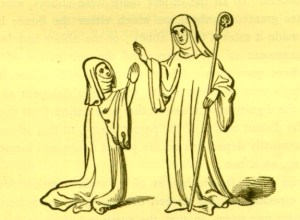| Rites of
confession and forgiveness, much debated during the era of reform. |
 |
|
|
Medieval Roman
Catholicism taught that confession and forgiveness taken together include
four elements. Contrition, or a heartfelt remorse over sin, was
to be followed by verbal, private confession of sins before a
priest of the church. Following this confession, the priest was expected
to administer absolution or forgiveness, one of the sacraments
of the Roman Catholic Church. The final movement of confession and absolution
was the assignment and completion of an act of penance on the
part of the penitent. This was usually some form of devotion. The Protestant
reformers reduced the complex of confession and absolution to three
parts: contritition, confession, and absolution. This took a variety
of forms. As the Augsburg
Confession attests, the Lutherans, for example, generally
intended to retain private confession as the norm and in many places
did so. In the Reformed tradition, on the other hand, a general, communal
confession linked to stringent church and communion discipline generally
prevailed. The radical and Anglican traditions employed a variety of
forms as well.
|
